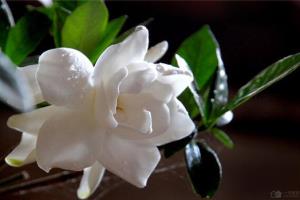Matters needing attention on how to raise Brazilian wood
Brazilian wood is an evergreen tree of tequila family. How to raise Brazilian wood? Let's take a look at it together.
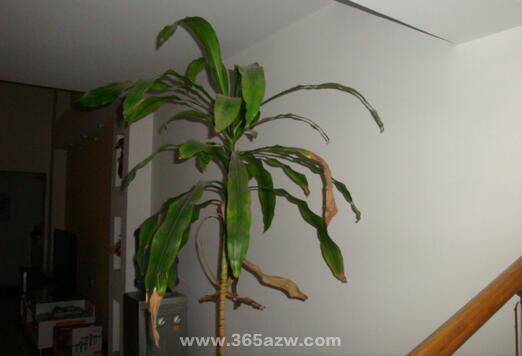
Brazilian wood culture methods:
one. Soil selection of Brazilian Wood Culture
The potted Brazilian wood on the market is mostly made of fine sand, which is used by growers to fully root plants, but long-term use is not conducive to plant growth. For plants to thrive, they must be replaced with peat soil in stages. The requirement of soil is not strict, such as loose, good drainage, rich in humus and partial acidity (pH5. Five to six. 0) is the most suitable soil. The culture soil can be prepared with 4 parts of rotten leaf soil, 3 parts of garden soil, 2 parts of river sand (or perlite) and 1 part of organic fertilizer.
two. Watering method of Brazilian wood culture
Brazilian wood is more resistant to drought, but insufficient watering, basin soil is too poor growth. The basin soil should always be kept moist during the growing season, especially in the summer when it is growing vigorously. Family potted plants should be dry and wet, that is, the surface layer of potted soil should be watered thoroughly. People should gradually reduce the amount of water after autumn, and watering should be controlled during the dormant period in winter. Too much watering will cause root rot.
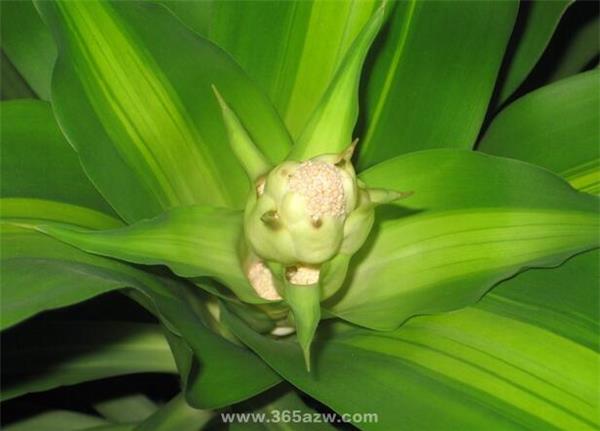
In the process of cultivation and maintenance, a certain amount of air humidity should be maintained. For example, when the air is dry, water should often be sprayed to the leaf surface to prevent the leaf tip from drying up and curling, and to make the leaf clean and bright. During the growth period, if the leaves were sprayed with water 2 or 3 times a day, the leaves would stretch well.
Water quality should be kept clean during the cultivation period. Water should be watered twice a week. It is not easy to have too much water to prevent the trunk from rotting. When it is hot in summer, spray can be used to improve the air humidity and spray water on the leaves to keep it moist.
three. Fertilization methods for Brazilian wood culture
Potted Brazilian wood should not be too large, it should be allowed to grow slowly in order to maintain an appropriate height. Therefore, less fertilizer should be applied. The application of dilute liquid fertilizer every 15-30 days during the growth period can make the leaves bright. Variegated leaf varieties should apply less nitrogen fertilizer or fertilizers with high nitrogen content so as not to lighten the speckle color of the leaves. Generally apply 20% ~ 25% rotten cake fertilizer solution, can also use 0. 2% zero. 3% diammonium phosphate plus 0. 3%. 5% potassium nitrate topdressing, can also use 0. 1% urea plus 0. 2% potassium dihydrogen phosphate aqueous solution was foliar sprayed.
Brazilian wood in the growing period should be appropriate extra-root topdressing, with 100 times diluted nutrient solution spray leaves, once every semimonthly. After several years of cultivation, the plant is too tall or the leaves of the lower part of the stem fall off, and when the shape of the tree is poor, it should be pruned. Change the basin or soil every early spring. In addition, excessive ventilation, drought, irregular watering and excessive fertilization can cause leaf tip scorch.
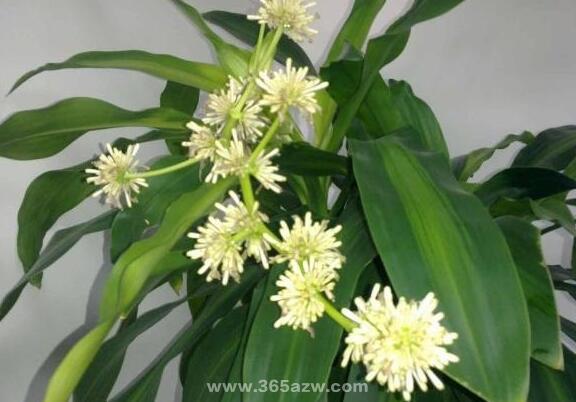
four. Temperature requirements for Brazilian wood culture
The best temperature for Brazilian wood is 20: 30 ℃. It can pass the winter when the temperature is more than 10 ℃. When the temperature is too low, it will stop growing.
Brazilian wood can grow all the year round as long as the temperature and other conditions are suitable. When it is high in summer, it should be shaded properly, and the room temperature in winter should not be lower than 5 ℃, but it is best to make it dormant in winter, the dormancy temperature is 13 ℃, and the temperature is too low, chloasma will appear on the leaf tip and leaf edge.
five. Lighting requirements of Brazilian wood culture
Brazilian wood has a wide range of adaptation to light and likes light and withstands shade. However, if it is placed in too shady places indoors for a long time, it can lead to the yellowing of the leaves and lighten the stripes of the striped leaves. In spring, autumn and winter, we should see more sunshine, especially in winter. In the bright part of the room, it can be placed all the year round. If it must be placed in a darker room for viewing, after 15-30 days of viewing, it should be maintained in a place with suitable light for a period of time, and then placed indoors for viewing, so as to cycle. Brazilian wood is afraid of strong light, so we should pay attention to prevent direct sunlight in summer. For outdoor maintenance in summer, we should pay attention to shading with about 50% of the shading materials to prevent the leaves from being burned by the scorching sun and affect the ornamental effect.
six. Control of Diseases and insect pests in Brazilian Wood Culture
The main diseases are soft rot, leaf spot and stem rot. Ventilation and dehumidification can reduce the occurrence of diseases. After the onset of the disease, 75% wettable chlorothalonil or 70% wettable methyl topiramate 1000 times can be sprayed for prevention and treatment. The main pests are red spiders, shell insects, etc., which can be controlled by 1000 times of dichlorvos, or sprayed with other appropriate pesticides.
Points for attention in Brazilian wood culture:
Brazilian wood such as improper maintenance and management, often appear leaf scorched edge, leaf tip scorched, brown patches on the leaf. There are no more than the following reasons:
one. The air in the environment of cultivation and growth is dry and too ventilated, resulting in faster evaporation of water in the leaves and a lack of water supply in the roots.
two. The light is too strong, especially in summer, when the potted flowers are suddenly moved outside to allow the sun to be exposed, it is extremely easy to suffer from sunburn, resulting in ten yellow or even scorched mouths.
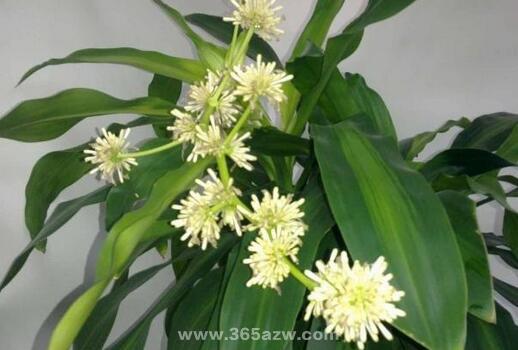
three. Watering irregularly, sometimes more and less, causing root rot and brown spots on the leaves.
four. Overfertilizing. If the application of too much nitrogen fertilizer and lack of phosphate fertilizer, it is not only easy to cause plant overgrowth, but also cause root burning, affect the absorption of water, and make the leaves scorched.
five. When the overwintering temperature is too low, the leaves turn yellow and scorch due to low temperature and cold injury.
In view of the above reasons, in order to prevent Brazilian wood leaves from scorching, we must be careful in daily maintenance and pay attention to the following:
In the environment in which Brazilian wood grows, the air humidity should be kept at 70%, 80%, and it is best to spray water to the leaves and the surrounding environment regularly. The basin soil should be mixed with some coarse sand grains, which is conducive to drainage, the amount of water should be moderate, the basin soil should not be too dry or too wet, and should be watered less in winter so as not to cause root rot. It is better to apply fertilizer with thin liquid fertilizer, once every half month, and stop fertilization after September, which is beneficial to overwintering. In summer, we should pay attention to shade, not direct light, and the overwintering temperature must be kept above 12 ℃.
Conservation and management of Brazilian wood in pots
The soil in the flowerpot where Brazilian wood is planted should be kept moist, but it should not be flooded, or the roots will rot. Due to vigorous growth, large water consumption, easy to appear water shortage phenomenon, should pay attention to timely watering, normal weather should be fully watered once a day, space or ground sprinkler 2 to 3 times, air humidity requirements of 80%, high temperature and humidity is conducive to its rapid growth. Too much or too little watering will lead to root rot, drooping leaves and dull leaves. The rotten root should be removed at this time. If the bottom stake is rotten, it can be sawed off and use 0. Soak 2% potassium permanganate in water for 10 to 30 minutes and bury it in a well-drained matrix soil. The leaf edge is scorched or dry, which is caused by air dryness, and can be improved by spraying water to the leaf surface.
The above is the introduction of how to raise Brazilian wood. I hope it will be helpful to you.
three. Watering irregularly, sometimes more and less, causing root rot and brown spots on the leaves.
four. Overfertilizing. If the application of too much nitrogen fertilizer and lack of phosphate fertilizer, it is not only easy to cause plant overgrowth, but also cause root burning, affect the absorption of water, and make the leaves scorched.
five. When the overwintering temperature is too low, the leaves turn yellow and scorch due to low temperature and cold injury.
In view of the above reasons, in order to prevent Brazilian wood leaves from scorching, we must be careful in daily maintenance and pay attention to the following:
In the environment in which Brazilian wood grows, the air humidity should be kept at 70%, 80%, and it is best to spray water to the leaves and the surrounding environment regularly. The basin soil should be mixed with some coarse sand grains, which is conducive to drainage, the amount of water should be moderate, the basin soil should not be too dry or too wet, and should be watered less in winter so as not to cause root rot. It is better to apply fertilizer with thin liquid fertilizer, once every half month, and stop fertilization after September, which is beneficial to overwintering. In summer, we should pay attention to shade, not direct light, and the overwintering temperature must be kept above 12 ℃.
Conservation and management of Brazilian wood in pots
The soil in the flowerpot where Brazilian wood is planted should be kept moist, but it should not be flooded, or the roots will rot. Due to vigorous growth, large water consumption, easy to appear water shortage phenomenon, should pay attention to timely watering, normal weather should be fully watered once a day, space or ground sprinkler 2 to 3 times, air humidity requirements of 80%, high temperature and humidity is conducive to its rapid growth. Too much or too little watering will lead to root rot, drooping leaves and dull leaves. The rotten root should be removed at this time. If the bottom stake is rotten, it can be sawed off and use 0. Soak 2% potassium permanganate in water for 10 to 30 minutes and bury it in a well-drained matrix soil. The leaf edge is scorched or dry, which is caused by air dryness, and can be improved by spraying water to the leaf surface.
The above is the introduction of how to raise Brazilian wood. I hope it will be helpful to you.
Related
- Wuhan Hospital Iron Tree Blooming Result Was Instantly Frightened by the Gardener Master
- Which variety of camellia is the most fragrant and best? Which one do you like best?
- What is the small blue coat, the breeding methods and matters needing attention of the succulent plant
- Dormancy time and maintenance management of succulent plants during dormancy
- Minas succulent how to raise, Minas succulent plant pictures
- What are the varieties of winter succulent plants
- How to raise succulent plants in twelve rolls? let's take a look at some experience of breeding twelve rolls.
- Attention should be paid to water control for succulent plants during dormant period (winter and summer)
- Watering experience of twelve rolls of succulent plants
- Techniques for fertilizing succulent plants. An article will let you know how to fertilize succulent plants.


